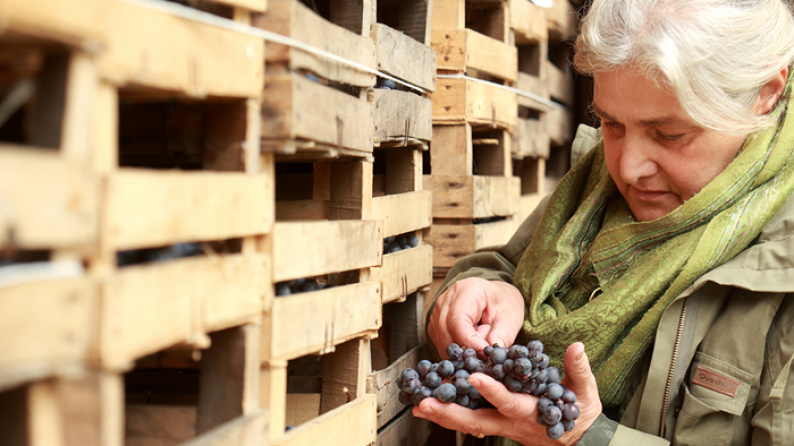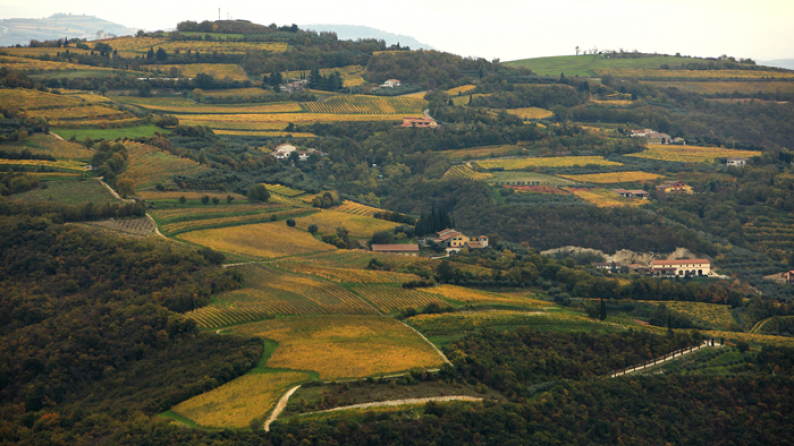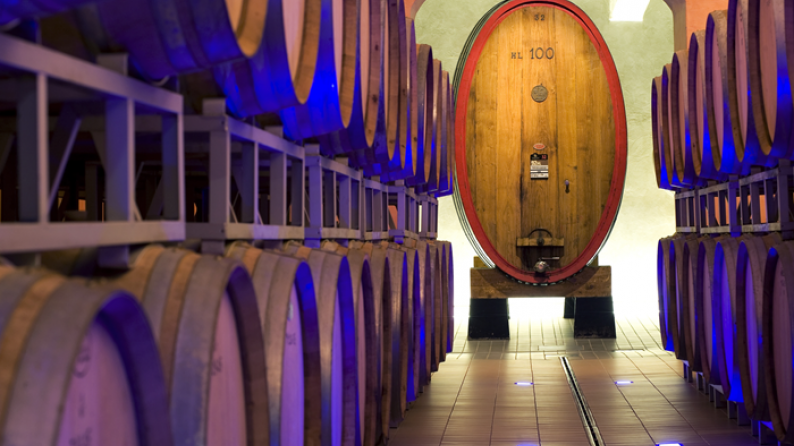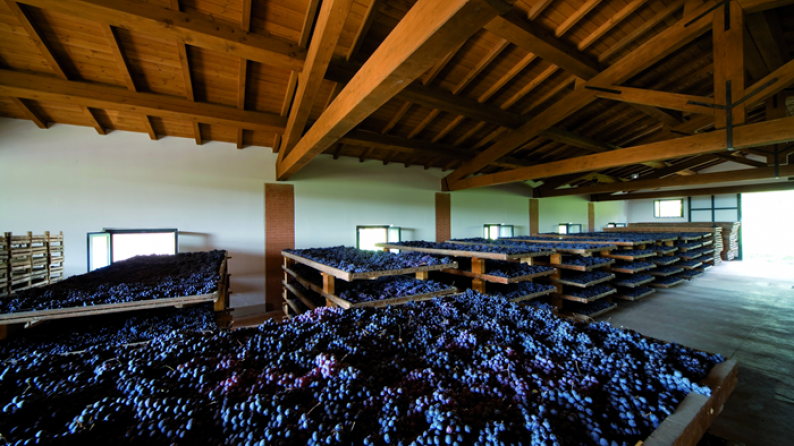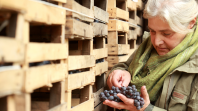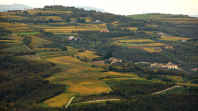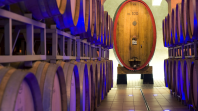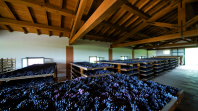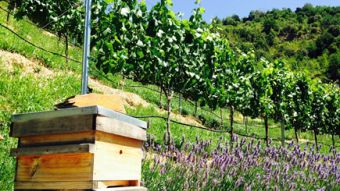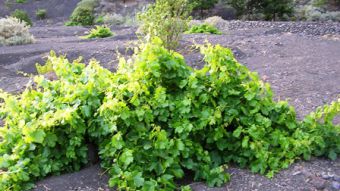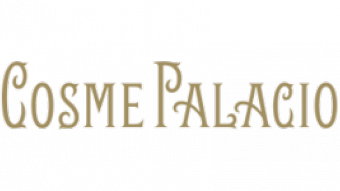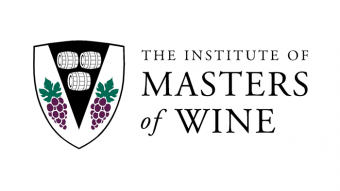Valpolicella
Few regions have a name so associated with wine as Valpolicella. It is the "vallis polis cellae" of the Etruscans, the valley of many cellars.
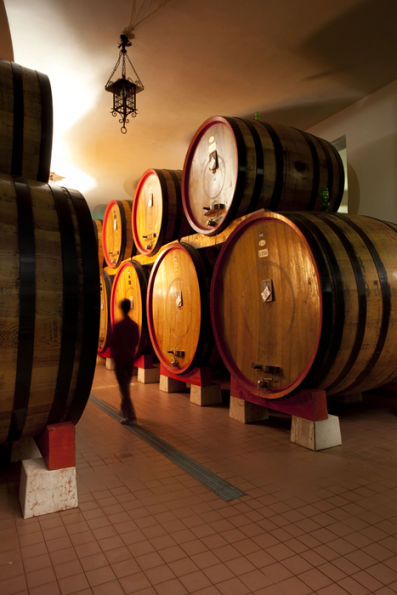 Bolla - Botti Bolla PedemonteThe Romans turned it into one of its most important appellations of origin, from which came the epic "acinatico" wine (literally, made only from grapes berries, see below). In the Middle Ages, the Scaligeri, who were the lords of Verona and therefore of Valpolicella, were aware of the importance of the wine to the future of their fiefdoms and so they regulated every aspect of its production and trade. The subsequent Venetian domination of the area meant that the wines from Valpolicella came to be enjoyed in distant Turkish and Asian cities. Today, the wines of Valpolicella, especially the Amarone, are worshipped by fine wine enthusiasts, some paying outrageous prices for the most distinguished Amarone.
Bolla - Botti Bolla PedemonteThe Romans turned it into one of its most important appellations of origin, from which came the epic "acinatico" wine (literally, made only from grapes berries, see below). In the Middle Ages, the Scaligeri, who were the lords of Verona and therefore of Valpolicella, were aware of the importance of the wine to the future of their fiefdoms and so they regulated every aspect of its production and trade. The subsequent Venetian domination of the area meant that the wines from Valpolicella came to be enjoyed in distant Turkish and Asian cities. Today, the wines of Valpolicella, especially the Amarone, are worshipped by fine wine enthusiasts, some paying outrageous prices for the most distinguished Amarone.
The Valpolicella region extends north of the city of Verona, historically famous for its Roman arena and its star-crossed lovers, Romeo and Juliet. The area is made up of a succession of valleys running north-south, extending almost in parallel from near Lake Garda down to where the land smoothly transitions into the Soave region and the plains. It is divided into several sub-areas, the two most prized, Classico and Valpantena, are to the far west.
Centuries of premium agriculture have resulted in an anthropomorphic landscape of great beauty, marked by thousands of kilometres of "marogne", stone walls which, in some cases, are works of art. The traditional mixed growing with olive and cherry trees on the slopes, and other fruit, cereal and vegetable crops in the valley, as well as the picturesque architecture of its villages, complete the picture of an area that is well worth a visit, even if you are not a wine lover.
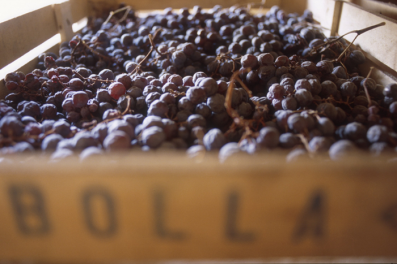 Drying Amarone grapes (Bolla)The climate is warmer than you might expect for Valpolicella’s latitude, much further north than the Pyrenees, for example. The thermostatic effect of Lake Garda, and the protection afforded by Mount Baldo against the cold winds blowing from the not too distant Alps, retain precious heat for the ripening the grapes. Rainfall is abundant, over 1,000 mm per year. As we know, a lot of water is not good for the phenolic ripening of red grapes, which need a certain lack of water. The best soil in Valpolicella, called "biancone", is the quality factor in the region’s better wine, since this soil has poor water retention, especially on the slopes where the best Valpolicella wine comes from.
Drying Amarone grapes (Bolla)The climate is warmer than you might expect for Valpolicella’s latitude, much further north than the Pyrenees, for example. The thermostatic effect of Lake Garda, and the protection afforded by Mount Baldo against the cold winds blowing from the not too distant Alps, retain precious heat for the ripening the grapes. Rainfall is abundant, over 1,000 mm per year. As we know, a lot of water is not good for the phenolic ripening of red grapes, which need a certain lack of water. The best soil in Valpolicella, called "biancone", is the quality factor in the region’s better wine, since this soil has poor water retention, especially on the slopes where the best Valpolicella wine comes from.
The scholar, Pollini, counted 82 different grape varieties grown in the area in 1822. Today we have four main varieties: Corvina, Corvinone, Rondinella and Molinara. Almost all Valpolicella wines are a blend of some or all of these varieties, but certainly the Corvina variety is the most important, playing a role not dissimilar to the Tempranillo in Rioja Alta. It is this variety which provides fruit, colour and tannin, while Corvinone is considered a slightly lesser cousin to Corvina, Rondinella is clearly a secondary grape variety as its lack of character prevents it from shining alone, and Molinara tends to be overlooked due to its paler colour.
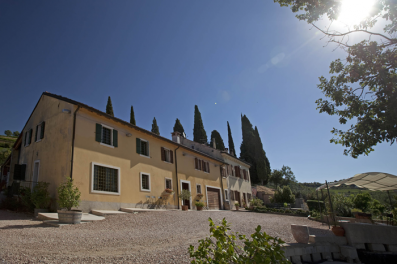 Corte Sant´AldaAs for the growing methods, Valpolicella offers an essay on the history of viticulture for those interested. There are still vines grown according to the method devised by the Etruscans over two thousand years ago - up against the trunks of fruit trees. In these vineyards, the wide space between the vines is covered with arable crops, vegetables or potatoes. The higher quality of the wine obtained from the best quality soils led to a move away from Etruscan systems to more intensive models and to growing in pergolas which primarily involves completely covering the available area with vines, trained at a certain height and leaving the clusters hanging down below, lovingly protected from the sun. The 'parras' in Spain bear a certain resemblance to the pergolas. Today, the pergola has more often been replaced by the "pergoletta", a training system that leaves some area still exposed to the sun, and, more recently, to the French trellising systems we know so well in Spain, better suited to mechanization. A walk through the vineyards of Valpolicella shows infinite variations of these three types.
Corte Sant´AldaAs for the growing methods, Valpolicella offers an essay on the history of viticulture for those interested. There are still vines grown according to the method devised by the Etruscans over two thousand years ago - up against the trunks of fruit trees. In these vineyards, the wide space between the vines is covered with arable crops, vegetables or potatoes. The higher quality of the wine obtained from the best quality soils led to a move away from Etruscan systems to more intensive models and to growing in pergolas which primarily involves completely covering the available area with vines, trained at a certain height and leaving the clusters hanging down below, lovingly protected from the sun. The 'parras' in Spain bear a certain resemblance to the pergolas. Today, the pergola has more often been replaced by the "pergoletta", a training system that leaves some area still exposed to the sun, and, more recently, to the French trellising systems we know so well in Spain, better suited to mechanization. A walk through the vineyards of Valpolicella shows infinite variations of these three types.
Let's get to the wines. We are in an area of red wines, produced in huge quantities, and of very variable quality. Any Italian trattoria offers Valpolicella wines at very affordable prices and of basic quality. But of course it is not these wines that we are interested in. The first level of quality is found in the appellation. You are more likely to find something of interest in the Valpolicella Classico and Classico Superiore sub-regions than elsewhere. But the best guide to quality is the name of the producer. If you do not want to take any chances, trust the 'Classicos' and pay the inevitable premium price. Quintarelli, Bolla, Masi, Cesari, Sartori and some others, are the names to look out for. My favourite is a small producer, Terre di Leone, whose "Dedicatum" offers a hymn to the terroir. Produced from a mixture of 14 varieties, all historically planted in the region, the wine is distinguished by its softness and freshness and by its cheerful fruitiness and liveliness on the palate. Unlike the barroque style, heavy wines, it possesses the complexity of a lively wine. A gem.
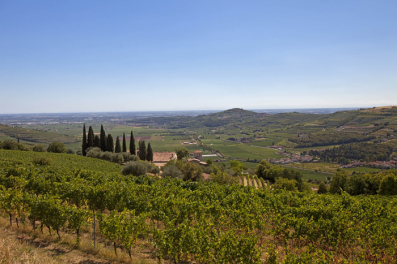 View of Corte Sant´AldaThis wine excites me for an important reason – it does not have to resort to concentrating the bunches by human means, it can rely on its own terroir. But generally speaking, Valpolicella wines tend to be of little consistency and not much colour. Some winemakers obtain more body by blending in Merlot, the great Bordeaux grape variety that gives both excellent colour and tannin, when well made. Because it does not respect typical character, Damoli's "Brigasco", which contains 20% Merlot, is not a Valpolicella, but a Rosso Veronese. However it oozes Valpolicella quality throughout, despite its greater density and fine tannin (the contribution of the Merlot). Highly recommended.
View of Corte Sant´AldaThis wine excites me for an important reason – it does not have to resort to concentrating the bunches by human means, it can rely on its own terroir. But generally speaking, Valpolicella wines tend to be of little consistency and not much colour. Some winemakers obtain more body by blending in Merlot, the great Bordeaux grape variety that gives both excellent colour and tannin, when well made. Because it does not respect typical character, Damoli's "Brigasco", which contains 20% Merlot, is not a Valpolicella, but a Rosso Veronese. However it oozes Valpolicella quality throughout, despite its greater density and fine tannin (the contribution of the Merlot). Highly recommended.
Since time immemorial, Valpolicella wines have sat in the pantheon of great wines due to techniques of artificially drying the grapes, i.e the Amarone and, to a lesser extent, the Ripasso and Recioto wines. Over 1,500 years ago, Cassiodoro, a magistrate in the service of King Teodorico, praised the 'acitánico' wine and described its production process, which is incredibly similar to the one used today. In short, an Amarone is made from grapes that have been harvested at full maturity and are transformed into raisins in drying rooms, some more traditional than others. The grapes therefore lose water and gain in concentration of everything else - sugar, colour, acidity, etc. The raisins are vinified as red wine, which then undergoes fairly long ageing in wooden containers of various sizes.
The wines produced are of very high alcohol content, between 15 and 18%, with resulting high volatile acidity. They are sometimes very nice, with aromas of plums, blueberries and animal overtones, and varying degrees of oak character. Most modern Amarone wines also contain appreciable levels of residual sugar, which is more to do with the taste of its biggest market, the U.S., than with any criteria associated with quality or character. The best wines age well, developing very distinctive aromas of undergrowth and humidity. I prefer Amarone as a dessert wine and with fermented cheeses rather than paired with fine dishes, but it is purely a matter of taste.
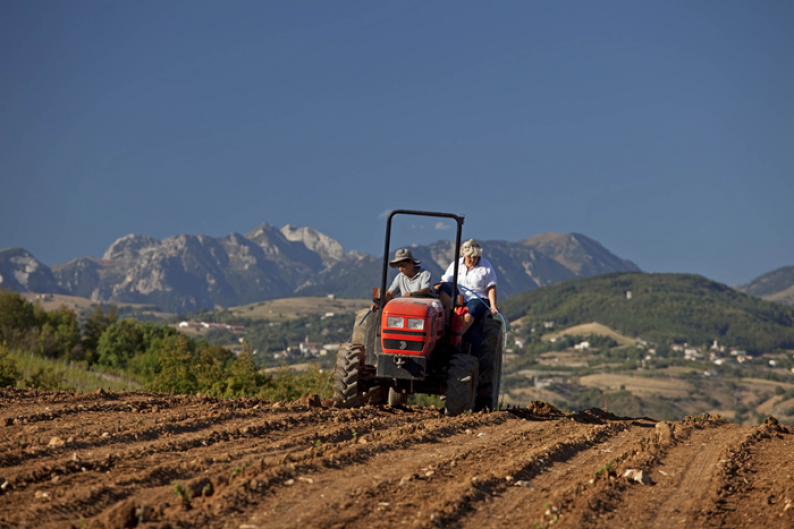 Corte sant'Alda Cesar Marinella
Corte sant'Alda Cesar Marinella
I will give you a list of my favourite wines some other time, as this list would be long and perhaps not that useful, as these wines already feature in many guides. Nor do I have space to cover Ripasso and Recioto, two other styles of wines from the region - we will also leave these for a future issue. I will finish by mentioning one Amarone for its distinctive character. "Corte Sant'Alda" from Marinella Camerani may not be the best Amarone and certainly not the most well-known, but it is one of the wines that most impressed me. You could think of Amarone as being the result of many techniques which would appear to diminish the influence of the terroir within the final quality balance - artificial drying of the grapes, winemaking in extreme conditions with a lot of alcohol and high volatile acidity, residual sugar, ageing in oak, and so on. And yet, Corte Sant'Alda has an aromatic precision which only wines from the best terroirs usually possess. The noble fruit that became this wine can endure any transformation process, and speaks to us of a delicate terroir, a cool, healthy climate and a long growing season. The fact that the lady who makes this wine follows biodynamic principles must have something to do with this miracle, but what really counts is that Valpolicella can give us something unique, often extremely pleasant, always curious and idiosyncratic. Don't overlook this exciting region or its wines!


